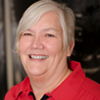Manufacturing Innovation Blog
Powered by the Manufacturing Extension Partnership

Photo Credit: iStock.com/pixelfit
In physics, a collision is defined as an encounter between particles resulting in exchange or transformation of energy. Within the MEP National NetworkTM, we don’t work with particles, but we do see collisions of this type all the time. Companies are transformed by the exchange of information and energy between them, our centers, and our many other collaborators.
The Massachusetts Manufacturing Extension Partnership (Mass MEP) Center recently facilitated such a collision at the Fabric Discovery Center (FDC) in Lowell among representatives from the University of Massachusetts at Lowell (UMASS Lowell), the Advanced Functional Fabrics of America Manufacturing (AFFOA) Manufacturing USA Institute, several small manufacturers, and the MEP Centers from the Northeast and Atlantic Coast.
This collision of academia, federally funded laboratories, the MEP National Network, and manufacturers resulted in an energized exchange of information, perspectives, ideas, and knowledge. Before this event, some manufacturers were unaware of the resources available for research, testing, workforce training, and prototyping available through the FDC.
Now they know that the FDC offers manufacturers the full spectrum of development, from advanced fiber technology to fabrication to manufacturing using robots. The center brings together a trio of Manufacturing USA Institutes: AFFOA, NextFlex (which focuses on flexible hybrid electronics), and Advanced Robotics for Manufacturing (ARM).
Together, they are transforming the energy of advanced manufacturing for the textile industry by creating new textile technologies.
Imagine a coat that can sense the temperature and puff up for added insulation when it’s cold, and shrink layer thickness when it’s warm. This kind of futuristic-sounding clothing could soon be made possible by flexible sensors woven with fibers that expand and contract—work being done at the FDC today. The event opened the doors for our manufacturers to imagine what’s possible in exciting new technology areas.
Connected Collision Spaces
Now imagine – what if there were more of these “collision” spaces? And what if these spaces could “collide” with each other, bringing more technology exposure to more manufacturers across the nation? That’s what MEP Centers in the Northeast are making happen.
On October 4, 2018, Mass MEP will again provide collision space for government, academia, the Manufacturing USA Institutes, MEP Centers, and manufacturers to create energy and transformation around more Manufacturing USA Institutes.
Later this fall, NY MEP will host this same type of collision event around the Manufacturing USA Institutes in New York – the Advanced Integrated Photonics (AIM) Institute, the Reducing EMbodied-Energy And Decreasing Emissions (REMADE) Institute, and the Rapid Advancement in Process Intensification Deployment (RAPID) Institute. Since NY MEP has connections to multiple other Manufacturing USA Institutes outside the state, manufacturers will have the opportunity to interact with them as well.
The ability of the MEP National Network to create, enable, and connect these collision opportunities is unique. No other organization, public or private, has the capability to bring more advanced manufacturing technology and resources collectively to the manufacturers of the USA. Connect with your local MEP National Network Center for information about collision opportunities in your region.


